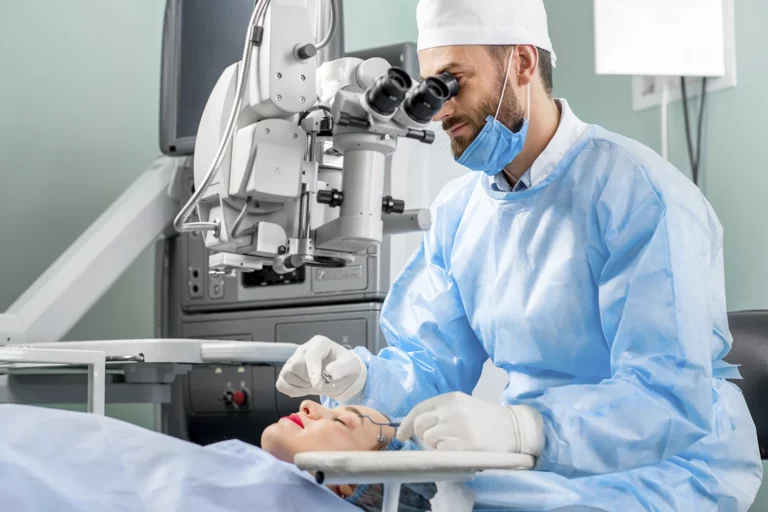Eyebrows are an essential facial feature, contributing to expressions and enhancing overall facial aesthetics. Unfortunately, factors like over-plucking, genetics, aging, or medical conditions can lead to thinning or loss of eyebrow hair. Eyebrow hair transplantation offers a permanent solution, restoring natural-looking eyebrows. This article explores the procedure, eligibility, preparation, and why Royal Clinic in Turkey is a leading destination for this treatment.
Introduction to the Procedure
Eyebrow hair transplantation is a minimally invasive procedure that involves moving hair follicles from a donor site (often the back of the scalp) to the eyebrows. The process aims to create natural-looking, fuller eyebrows by carefully implanting individual hair follicles to match the natural growth direction and density of the patient’s existing brows. The most commonly used technique is Follicular Unit Extraction (FUE), which involves extracting individual follicles and implanting them in the desired pattern on the eyebrows.
Stages of the Procedure
The eyebrow transplantation process involves several key stages:
- Consultation: During this stage, the surgeon assesses the patient’s current eyebrow condition, discusses goals, and designs the ideal shape. The desired thickness, arch, and length are determined, and the surgeon explains how the procedure will work for the individual’s needs.
- Preparation: On the day of surgery, local anesthesia is administered to both the donor and recipient areas. The eyebrows are cleaned, and the donor area is prepared for extraction.
- Extraction: Hair follicles are extracted from the donor area using the FUE technique. Each follicle is carefully selected to ensure it matches the texture and growth characteristics of eyebrow hair.
- Implantation: Tiny incisions are made along the desired brow shape, and individual hair follicles are implanted following the natural growth direction of the eyebrows. Precision is key, as the hair must be placed at the correct angle to ensure a natural look.
- Post-Procedure Care: Once the follicles are implanted, the eyebrows are cleaned, and patients are provided with instructions for post-operative care.
People Eligible for the Procedure
Eyebrow hair transplantation is ideal for individuals who want to enhance or restore their eyebrows due to various reasons:
- Over-plucking or thinning: People who have over-plucked their eyebrows or experienced thinning over time are excellent candidates for this procedure.
- Genetic conditions: Those born with naturally thin or sparse eyebrows may benefit from a transplant to achieve fuller brows.
- Trauma or scarring: Individuals who have lost eyebrow hair due to accidents, burns, or surgical scars are also eligible.
- Medical conditions: People suffering from conditions like alopecia or undergoing chemotherapy may experience eyebrow hair loss, making them suitable candidates.
- Cosmetic improvement: Anyone desiring a cosmetic enhancement to reshape, thicken, or alter the appearance of their eyebrows can consider this procedure.
Certain individuals, such as those with specific medical conditions affecting hair growth or poor donor hair availability, may not be suitable for the procedure.
Preparation Before the Procedure
Proper preparation is vital to the success of eyebrow transplantation. Surgeons usually provide specific instructions to follow, such as:
- Discontinue certain medications: Patients may need to stop taking blood-thinning medications or supplements that could increase bleeding during the procedure.
- Avoid smoking and alcohol: To promote better healing and minimize risks, it is recommended to avoid smoking and alcohol for at least one week prior to the procedure.
- Trim hair if necessary: While the donor area is typically not shaved completely, some trimming may be required depending on the hair extraction technique.
- General health check-up: A routine health check or blood test may be necessary to ensure the patient is fit for the procedure.
- Cleanse the area: The patient may be instructed to wash their face and eyebrows with a gentle cleanser on the day of the surgery to prevent any infections.
Instructions After the Procedure
Post-operative care is crucial for ensuring the success of eyebrow transplantation. Following these guidelines helps achieve optimal results:
- Avoid touching the eyebrows: It’s important to refrain from touching, rubbing, or scratching the newly transplanted area to prevent dislodging the grafts.
- Apply prescribed ointments: Use any topical treatments or antibiotics prescribed by the surgeon to prevent infection and promote healing.
- Keep the area dry: For the first few days after surgery, avoid getting the eyebrow area wet. The surgeon will provide detailed washing instructions.
- Sleep with head elevated: Keeping the head elevated for the first few nights helps reduce swelling and minimizes discomfort.
- Limit physical activity: Avoid strenuous activities or anything that could cause excessive sweating for at least two weeks after the procedure.
- Attend follow-up appointments: Follow-up consultations with the surgeon help monitor the healing process and ensure the transplanted hair follicles are thriving.
The Result
Patience is essential when it comes to the results of eyebrow hair transplantation. Here’s what to expect:
- Initial healing: Swelling and redness typically subside within a few days. Tiny scabs may form around the transplanted follicles, but these will fall off after about a week.
- Shedding phase: It’s normal for the transplanted hair to shed within the first 2-3 weeks. This is part of the natural hair growth cycle and should not cause concern.
- Growth phase: New hair growth starts around 3-4 months after the procedure. The full, permanent results become apparent within 9-12 months, with the transplanted hair growing naturally just like your original eyebrow hair.
Once fully grown, the transplanted eyebrow hair can be trimmed and shaped like natural brows. The result is fuller, thicker eyebrows that enhance facial features and provide long-lasting satisfaction.
Why the Procedure at Royal Clinic in Turkey
Royal Clinic in Turkey has established itself as a top destination for eyebrow hair transplantation, offering a blend of expertise, advanced techniques, and affordability. Here’s why Royal Clinic stands out:
- Expert Surgeons: Royal Clinic’s surgeons have extensive experience and expertise in eyebrow transplants. They are well-versed in creating natural, symmetrical, and aesthetically pleasing results.
- State-of-the-Art Technology: The clinic uses the latest technology and techniques, such as FUE, to ensure precision and successful outcomes for each patient.
- Affordability without Compromise: Turkey is renowned for offering high-quality medical treatments at a fraction of the cost compared to other countries. Royal Clinic provides competitive pricing without sacrificing quality.
- Comprehensive Care: From the initial consultation to post-procedure follow-up, Royal Clinic offers personalized care, ensuring that each patient receives the best possible treatment and support.
- Satisfied Clients: Royal Clinic has an impressive track record of successful procedures and satisfied clients who have achieved natural-looking eyebrows through transplantation.
Eyebrow hair transplantation offers a permanent and natural solution for individuals looking to enhance or restore their eyebrows. With the right preparation, procedure, and aftercare, patients can achieve transformative results. Royal Clinic in Turkey provides an excellent combination of expertise, technology, and care, making it the ideal destination for eyebrow transplants.





